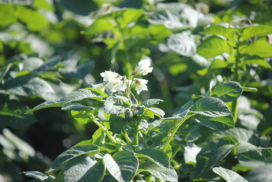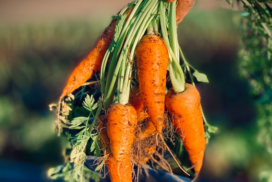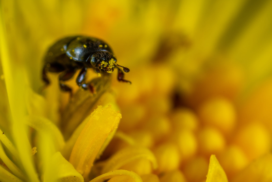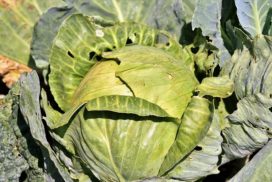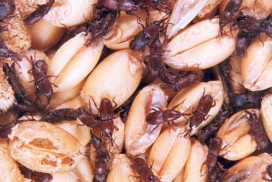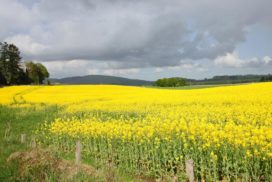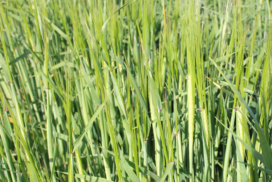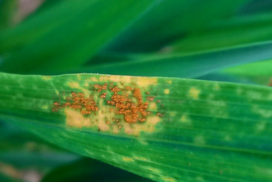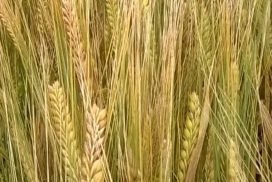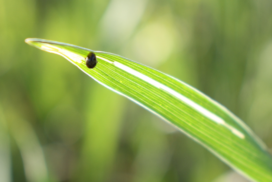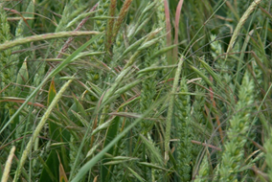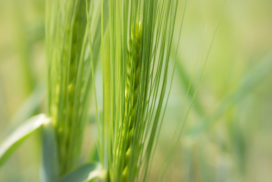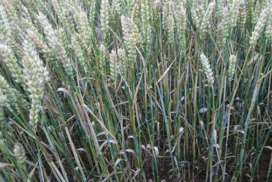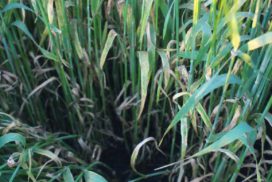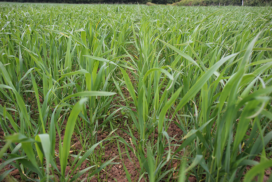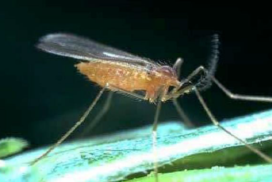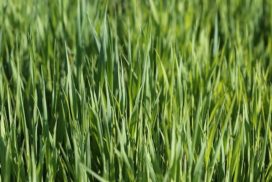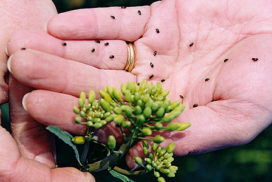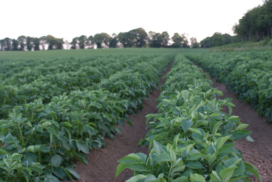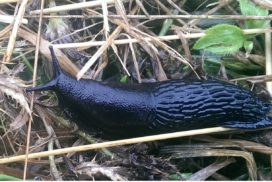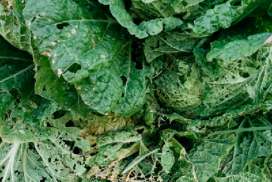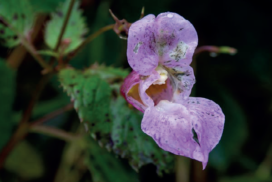Crop Health Update - June 2020
With the recent rain crops have perked up and on the whole, are relatively free of disease. The change to warmer sunny weather will allow T2 and T3 sprays to be put onto crops and hopefully, a prolonged spell of sunny weather lead to decent grain filling. One concern is that aphid flights and multiplication of aphids already on crops will increase with the return to warm sunny conditions.
Pest activity, in general, is increasing with diamondback moths being found in vegetable crops, cabbage root fly egg hatch past its peak, midge pests a threat to cereals and aphids vectoring virus into seed potatoes and carrots.
Potatoes: Blight Risk Update - Late June 2020
There have been no confirmed outbreaks of blight in Scotland so far this season, although there have been Hutton periods over the last week due to the damp humid weather. Check with AHDB Potatoes Fight against Blight regularly for the most up to date information on outbreaks. Also, check BlightWatch or BlightCast for the general blight risk where your crops are located. Read more here.
Carrots & Parsnips - June 2020
Carrot fly egg laying is tailing off now but the cool damp weather is prolonging things a bit. Crops that were sown with seed treated with Force ST (tefluthrin) will be protected from this first generation of carrot fly grubs (EAMU 20191619). Read more here.
Stay Alert for Pollen Beetle on Spring Oilseed Rape Crops - Late June 2020
As pollen beetles move off the winter crop at the end of flowering, they will be making a beeline for spring oilseed rape crops, where green-yellow bud is the key risk timing. One pollen beetle per plant can often cause enough damage to reduce yield. Check spring rape crops regularly until the onset of flowering and apply an insecticide if more than one beetle per plant is found throughout the crop. Read more here.
Vegetables & Forage Brassicas Pest Update - Late June 2020
First-generation cabbage root fly egg laying is still ongoing, with the cool wet weather prolonging the egg-laying period and subsequent hatching of grubs. Read more here.
Grain Stores - June 2020
It may seem early to think about protecting the coming harvest from pests in-store, but now is a good time to start cleaning stores in preparation for the harvest to come. Bear in mind that no pests of grain come in from the field - they are all loitering in the store or on associated machinery, trailers, pits, ducts just waiting for grain to arrive. They keep themselves ticking over on spilled grain, which can be found in crevices, on ledges, in pits and ducts. Read more here.
Winter Oilseed Rape Growth Stage Update - Late June
To view the crop growth stage update for Winter oilseed rape in late June click here.
Spring Barley Growth Stage Update - Late June 2020
Crops have leapt on with the rain and moisture but are still looking relatively disease-free. The main risk of ramularia comes after flowering, but the later it appears the better. Without chlorothalonil the ramularia risk is harder to manage but dry conditions during stem extension will have reduced to some extent the levels of ramularia that have reached the upper leaves. Read more here.
Winter Wheat Growth Stage & Disease Update – Late June 2020
The wet and humid weather is letting disease start to tick over. Yellow rust levels in SRUC's untreated trials have picked up but commercial crops are now within the safety net of fungicide programmes and there have not been many examples of stretches and delays to programmes to let it in. Read more here.
Winter Barley Growth Stage Update - Late June 2020
Disease levels are still low and if ramularia is going to be a feature this year it is still to swipe. All fungicide inputs are now applied and gates shut. There is a risk if the weather stays wet and humid that ear diseases will invade but there is no yield benefit to late applied ear sprays. Read more here.
Pests & Weeds Update for All Cereals - Late June
The return to cooler and damp weather has curtailed aphid flights into crops to a great extent. However, aphids will still be building up numbers on crops; meanwhile now is a good time to keep an eye out for black-frass or other grass weeds visible above the crop. Read more here.
Pests & Weed Update for All Cereals - Early June
The recent hot spell of weather has led to a jump in cereal aphids flying into crops. The cooler wet weather will slow them down, but aphids will be building up numbers on crops. Meanwhile, as crops move into later growth stages and grass weeds become visible above the crop, it is a crucial time to check that fields are clear of problem grass weeds. Viable seeds can start to be shed as early as June, so it is good advice to quickly remove any plants that are seen. Read more here.
Winter Barley Growth Stage Update
Using data from SRUC's monitored crop it is clear to see that ears have now emerged and so the timing window for spray interventions has now passed. Disease levels remain low and although crops are often short as a result of dry conditions, ear size looks reasonable apart from on poorer soils where crops remain thin. Read more here.
Winter Wheat Disease Update - June 2020
The shift to wetter weather over flowering obviously ups the risk of ear diseases and increases the chance that septoria levels which have been relatively low until now could flare-up. The fact that most flag leaf sprays were well-timed and used SDHI and azole chemistry is a plus, and the ear spray will give some continued protection. Yellow rust levels have fallen now that most crops are covered by fungicide programmes and mildew has only been picked up in a few crops. Read more here.
Spring Barley Disease risk - June 2020
Without chlorothalonil the ramularia risk is harder to manage but dry conditions during stem extension will have reduced to some extent the levels of ramularia that have reached the upper leaves. Risk now will depend on crop stress and how badly that triggers symptoms. Read more here.
Weed Management in Spring Barley - June 2020
Spring barley has been growing rapidly and is mostly beyond the stage where it can be sprayed for weeds. The dry weather doesn’t favour weeds like chickweed and annual meadow-grass that are shallow rooting, they tend to die back in very dry weather. Crops have largely grown away from any weed problems. Read more here.
Spring Wheat: Disease & Pest Update - June 2020
T2 fungicide programmes in spring wheat do not need to be quite as robust as for the winter crops although broadly the same principles apply. Yellow rust and Septoria both need to be managed but because growth stages are more rapid then often a head and shoulders approach is all that is needed and optimal doses are lower than for the winter crop. Meanwhile orange blossom fly and saddle gall midge can be a threat to spring wheat. Read more here.
Managing Spring Oats - June 2020
Oats are growing rapidly and T2 fungicides are due. Currently, the Mildew levels are low, however, patches of stunted growth may indicate cereal cyst nematode (CCN) or free-living nematodes. Read more here.
Pest risk in Spring Oilseed Rape - June 2020
As pollen beetles move off the winter crop at the end of flowering, they will be making a beeline for spring oilseed rape crops, where green-yellow bud is the key risk timing. One pollen beetle per plant can often cause enough damage to reduce yield. Check spring rape crops regularly until the onset of flowering and apply an insecticide if more than one beetle per plant is found throughout the crop. Read more here.
Potato blight - Early June 2020
There have been no confirmed outbreaks of blight in Scotland so far this season. The shift to the wetter weather may well increase the risk. As is the case every year, it’s important to deal with any potential sources of primary inoculum. Doing this effectively will reduce the risk of crop infection and allow each fungicide application to have greater efficacy. Control with fungicides is more effective, and could be less expensive, if the amount of inoculum challenging the crop is reduced. Read more here.
Pest Management in Potatoes - Early June 2020
Effective slug management in potatoes relies on applying molluscicide pellets at the best timing. Trials over several years have demonstrated that the key timing for pellet application is just before the crop canopy meets across the rows, particularly if there has been some rainfall or crops have been irrigated. Missing this timing will not provide significant reductions in slug damage even if pellets are applied several times after this timing. Find out more here.
Pest Management in Vegetable & Forage Brassicas - Early June 2020
First-generation cabbage root fly egg-laying and the onset of egg hatch is now well underway and will have been exacerbated by warm sunny weather, so any uncovered crops will be at risk. We are at around the peak of egg-laying just now, and at our monitored crops about two-thirds of the eggs laid have hatched, so time is running out to apply allowable control options to uncovered crops. Read more here.
Invasive Weeds - June 2020
Invasive weeds aren’t often an issue in fields, but they can crop up in field margins, non-cropped areas and beside water. The ideal is to catch them before they develop into a problem. In Scotland, it is not an offence to have invasive weeds, but under the Wildlife and Countryside Act 1981 it is an offence to cause the spread of certain non-native invasive species. Read more here.
Sign up to the FAS newsletter
Receive updates on news, events and publications from Scotland’s Farm Advisory Service

